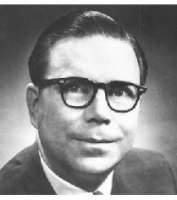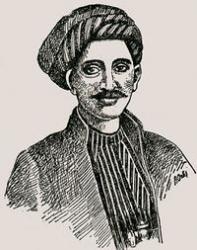
1791 - 1860 Person Name: Christian Carol Josias Bunsen Meter: 8.8.8.8 Translator (German) of "O Glory Of Thy Chosen Race" in The Cyber Hymnal Bunsen, Christian Carl Josias, Baron, Prussian Minister at Rome, 1823-1838; at Berne, 1839-1841; Ambassador to England, 1841-1854; was born at Corbach in Waldeck, 25th August, 1791; died at Bonn, November 28th, 1860. Having gained high honours in the Universities of Marburg and Gottingen, he began life as an assistant master in the Gymnasium of Gottingen, but soon quitted that post to prosecute the enquiries which he felt to be the true aim of his life, and for which he had already, at the age of 24, conceived the idea of a comprehensive plan of philological and historical research, culminating in a synthesis of philology, history and philosophy, with the application of that synthesis to religious and civil legislation. To the accomplishment of this youthful scheme it may truly be said that his whole life was dedicated; for though employed in the diplomatic service of his country fur 37 years, he unremittingly carried on his labours as a scholar, and always regarded public questions under the aspect of their bearing on the moral and religious welfare of man, governing his publications by his convictions on these points, in the pursuit of the aims thus indicated, he studied successively the languages and antiquities of the Germanic, Indo-Peraie, Semitic, and Egyptian peoples, the fruit of his investigations being enbodied in his:—
(1) "Description of Borne," 1819; (2) "Egypt's Place in the World's History," 1848; (3) "Hippolytus and his Age," 1852; (4) "Outlines of a Philosophy of Cniversal History," 1854; (5) "Signs of the Times," 1855; (6) "God in History," 1857-58; and lastly his (8) "Bibel-Werk," or Critical Text of the Bible, with com¬mentaries, which he did not live to complete.
The titles of these writings will indicate the fact that the studies and employments which aver came nearest to his heart lay in the direction of theology, believing as he did that the revivification of practical Christianity was the "essential condition of universal well-being"—of "the salvation of Church and State."
” It is my conviction," he says (1821, set. 29), "that all communion essentially consists in a common belief in the facts of the redemption of the human race through Christ; but when ... a congregation is to be thereby formed, three points must be considered: first, agreement by means of a theological expression of the points of faith; secondly, congregational discipline; thirdly, a common form of worship."
It was for the third of these that Bunsen felt himself especially called to labour; writing in 1821:—
"When I thought myself in my late illness on the brink of eternity ... I enquired what I ought to make my calling if God should prolong my life . . . and upon my theological labours I rested as the quarter in which my calling was to be sought. My thoughts were bent principally on my liturgical enquiries."
In 1822 he composed the Liturgy still in use at the German Chapel on the Capitol, followed in 1833 by his Versuch eines allgemeinen evangelischen Gesang- und Gebeibuclis, containing 934 Hymns and 350 prayers. In Germany the tendency of the centuries that had elapsed since the great age of hymn-writers had been to adapt their language and modify their thoughts in accordance with modern taste till, as Bunsen says, "Almost everywhere do weo find the admirable ancient hymns driven out of use by modern ones which are feeble and spiritless." Luther's asperities of diction and metre had to be softened down, in order to fit them to be sung in an age rejecting nearly all but iambic or trochaic verses, and moreover each government, sect, or school of opinion, thought them¬selves justified in remodelling the older National Hymnody according to their own ideas, till at length little remained of their pristine rugged glory, they were defaced past recognition.
Bunsen's object in his Versuch was to provide materials for a national hymn-book for the whole of Protestant Germany, irrespective of territorial, ecclesiastical or sectarian divisions. To this end he sought out the finest German hymns, and his selection includes a large pro¬portion of the best hymns in the language with no limitations of party. The success of Bunsen's work in Germany at large was attested by the rapid sale of an enormous edition, but when a reprint was called for he published instead a smaller edition of 440 hymns. The motive was his patriotic ambition to produce a handy volume like the English Book of Common Prayer, and he fondly hoped that when the volume was printed at the Rauhe Haus in 1846, it would speedily supplant the locally introduced Gesangbücher of the 18th and 19th centuries. This hymn-book has in fact been adopted for public worship by some individual congregations in Germany, and by many scattered throughout Australia, New Zealand, &c, but it never became a National Hymn-book. Bunsen was among the first to go back to the authors and their original texts, and the abridgments and alterations he made were done with tact and circumspection. Perhaps nothing, however, can better prove the high estimation in which Bunsen's first "epoch-making" work is held than the fact that his work of 1833 has been republished as:—
Allgemeines Eoangelisches Gesang-und-Gebet-bueh turn, Kirchen-und-Hausgebrauch: In vollig neuer Bearleitung von Albert Fischer. Gotha, F. A. Perthes, 1881.
and that this republication, or rather recast, was conducted by the first German hymnologist living. A parallel case of inability to command universal acceptance for public use on the one hand, and of renovating influence on national hymnody on the other, is that of Lord Selborne's Book of Praise. Before the date of its publication in 1862, little or no regard was paid to original texts. Since then, however, few collections have been published in Gt. Britain and America in which the principle laid down by him has not been followed with more or less fidelity.
But it is not Germany alone, or even perhaps most widely, that has profited by Bunsen's zeal for hymnology: Through the medium of translations such as those of Miss Catherine Winkworth, Mr. Massie, Miss Cox, and others, many German hymns are as familiar to English and American readers as to Germans. The Lyra Germanica (of which more than 30,000 copies have been sold in England and probably as many more in America; is a household book wherever English is spoken, and few, if any, collections of hymns that have appeared in England or America since its publication have been compiled without some hymns taken from the Lyra.
But no sketch of Bunsen would be complete without mentioning that he himself had no mean talent as a writer of sacred poems. Some of these pieces are given in his Biography, and one is noted under "O lux beata Trinitas." Perhaps the whole scope of Bunsen's life-work can scarcely be summed up better than in his own words written in 1817 [aet. 26].
"To study and then to set forth the consciousness of God in the mind of man, and that which, in and through that consciousness, he has accomplished, especially in language and religion." [Susanna Winkworth]
-- John Julian, Dictionary of Hymnology (1907)
Christian Karl Josias, Freiherr von Bunsen


